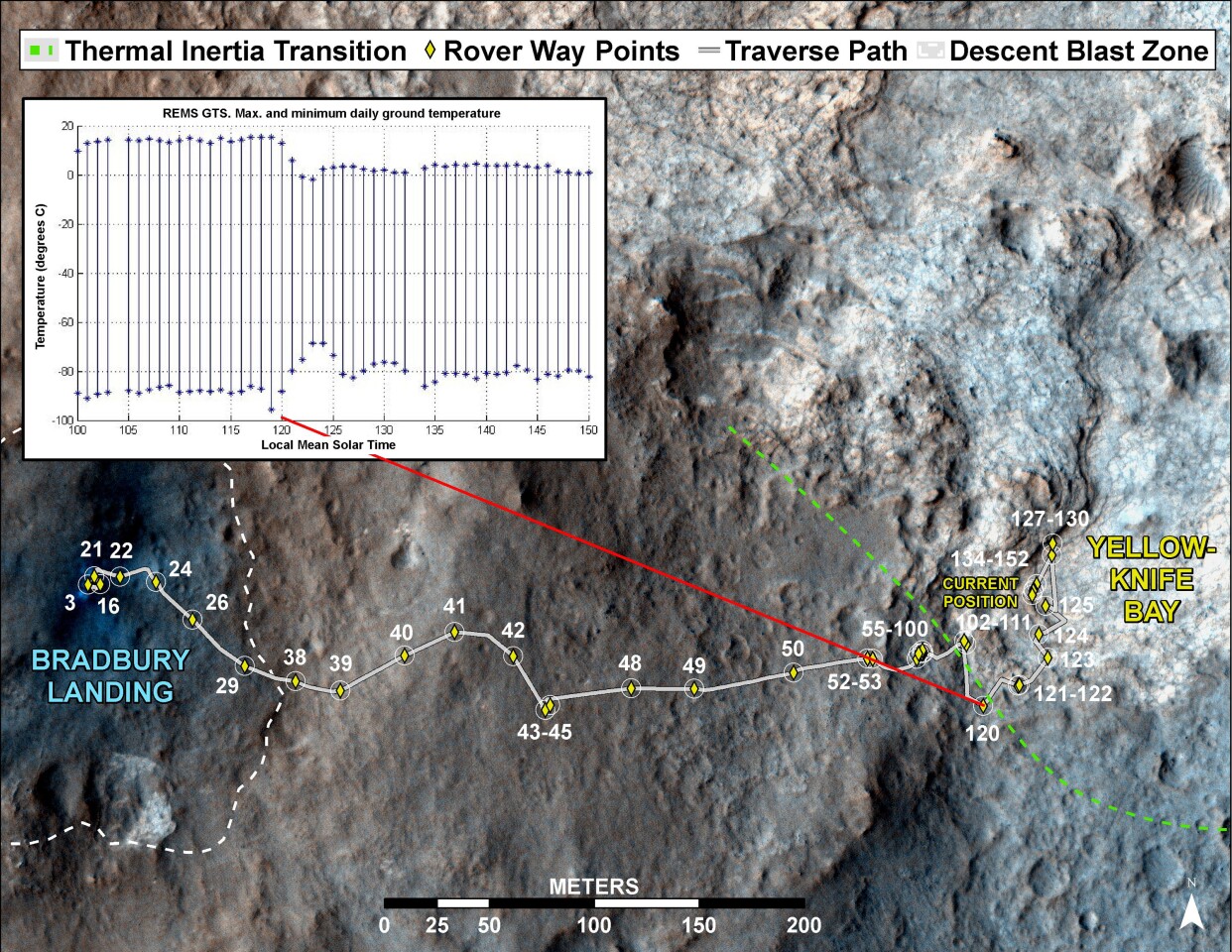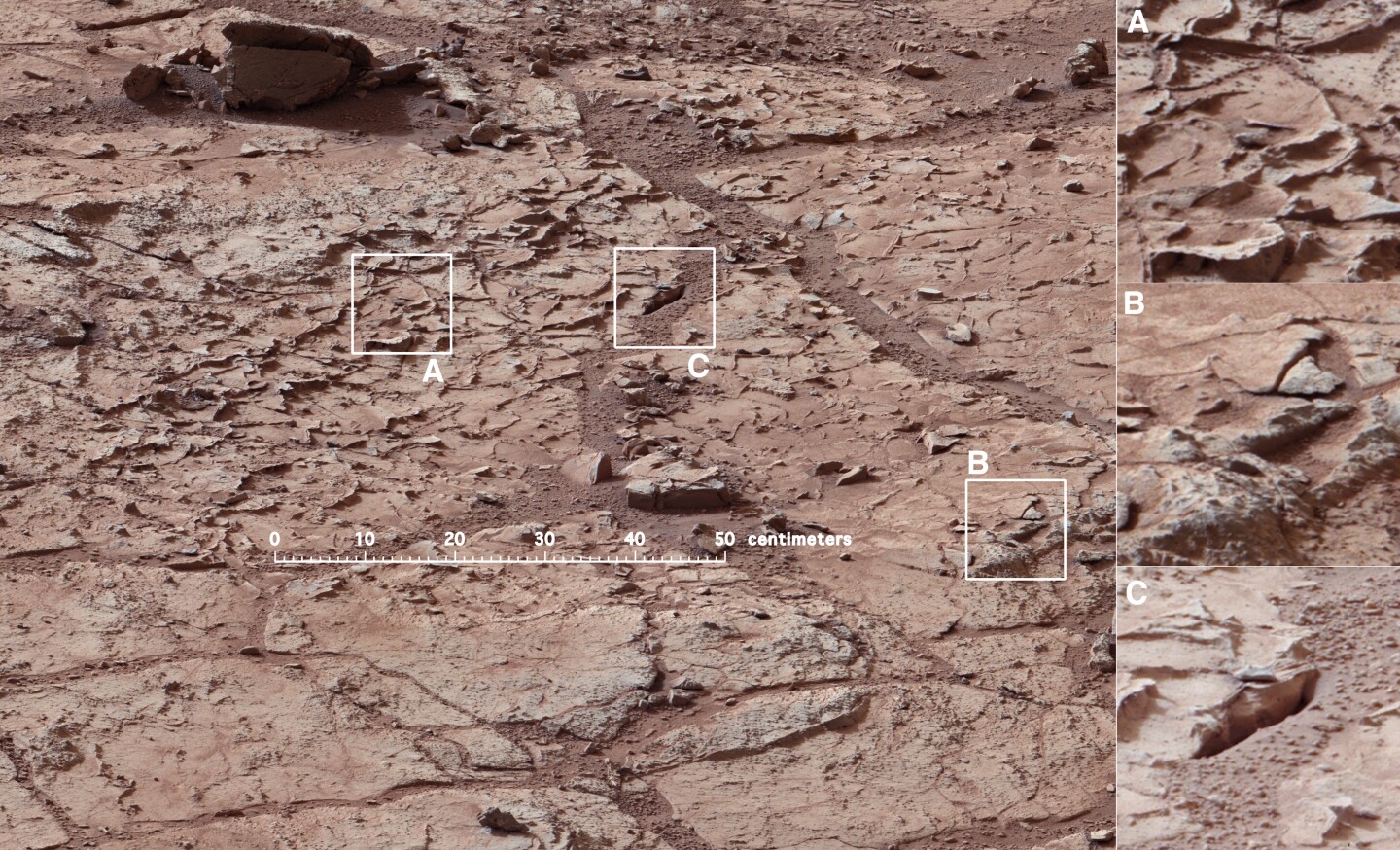NASA's Mars rover Curiosity is scheduled to carry out the first drilling ever conducted on the Red Planet. At a press conference, NASA officials said that the unmanned explorer would test its drill on a target rock within the next two weeks. The target selected is the "John Klein" area of Gale Crater where the rover will take rock samples as part of Curiosity's two-year mission to find places on the Red Planet where life could have or still might exist.
Curiosity has been on Mars for five months and has now moved into an area marked by sedimentary rock formations laced with sulfate-filled veins and concretions. After a comprehensive shakedown and beginning its sampling and analysis mission, the nuclear-powered robot will soon be deploying its drill for the first time. The reason why mission control at the Jet Propulsion Laboratory (JPL) in Pasadena, California has waited until now is because this is the most difficult part of the surface mission.

"Drilling into a rock to collect a sample will be this mission's most challenging activity since the landing. It has never been done on Mars," said Mars Science Laboratory project manager Richard Cook of JPL. "The drill hardware interacts energetically with Martian material we don't control. We won't be surprised if some steps in the process don't go exactly as planned the first time through."
With these unknowns in mind, mission control plans to go easy on the drill apparatus located in Curiosity's robotic hand. The rover will be guided through a series of steps, taking it slow and easy on soft stone to spare the drill and the percussion mechanism about which there was some concern at the time of launch. The depth of the drilling will only be five centimeters (1.96 in) and before drilling starts, mission control will use Curiosity's wheels to crush parts of John Klein's surface to learn more about its composition.

After this, the drill will carry out a percussion test and then will gather powdered samples from inside the rock. The first samples will be used to scrub the drill to to avoid contamination of analysis samples with material brought from Earth. A subsequent sample will be taken inside Curiosity. Another concern is the presence of Teflon on the drill bit, but JPL has determined that this poses no hazard to Curiosity's internal laboratories and that its presence can be allowed for in the analysis.
Once the sample has been delivered, Curiosity's laboratories will examine it to identify its minerals, learn its chemical composition and look for signs of organic substances. The main goal of this is to assess the area to determine if it could once have harbored life.
Over the holiday break, Curiosity scanned the vicinity in search of a suitable spot for drilling. Eventually, an area of the Yellowknife Bay depression called "John Klein" was selected. The name was given to honor the Mars Science Laboratory project's deputy project manager, who passed away in 2011.

The area was selected because of its diverse rock formations and deposits, which indicate a variety of forces have been at work there. John Klein consists of veins, nodules, cross-bedded layering, a lustrous pebble embedded in sandstone, and some holes in the ground. It's also very different from the terrain around Bradbury Landing where Curiosity touched down on August 6 of last year.
"The orbital signal drew us here, but what we found when we arrived has been a great surprise," said Mars Science Laboratory project scientist John Grotzinger, of the California Institute of Technology in Pasadena. "This area had a different type of wet environment than the stream bed where we landed, maybe a few different types of wet environments."
The formations there are older and deeper with a broad variety of sedimentary rocks that were transported into the area by some very strong forces – possibly running water. Temperature variations are also less due to the lighter tone of the area.

Light-toned veins in the rocks were studied with Curiosity's Chemistry and Camera (ChemCam) instrument, which found elevated levels of calcium, sulfur and hydrogen. This indicates the presence of hydrated calcium sulfate, which makes up minerals such as bassanite and gypsum. Since these require flowing water to form on Earth, this finding is very interesting to the scientists at JPL.
Another discovery was made by Curiosity's Mars Hand Lens Imager (MAHLI), which found a variety of sand grains with sizes ranging up to that of a peppercorn. The diversity of their size and appearance indicates that they were formed by different processes and transported into the area by relatively strong forces.
"All of these are sedimentary rocks, telling us Mars had environments actively depositing material here," said MAHLI deputy principal investigator Aileen Yingst of the Planetary Science Institute in Tucson, Arizona. "The different grain sizes tell us about different transport conditions.
The video below is JPL's latest Curiosity mission update.
Source: NASA


















